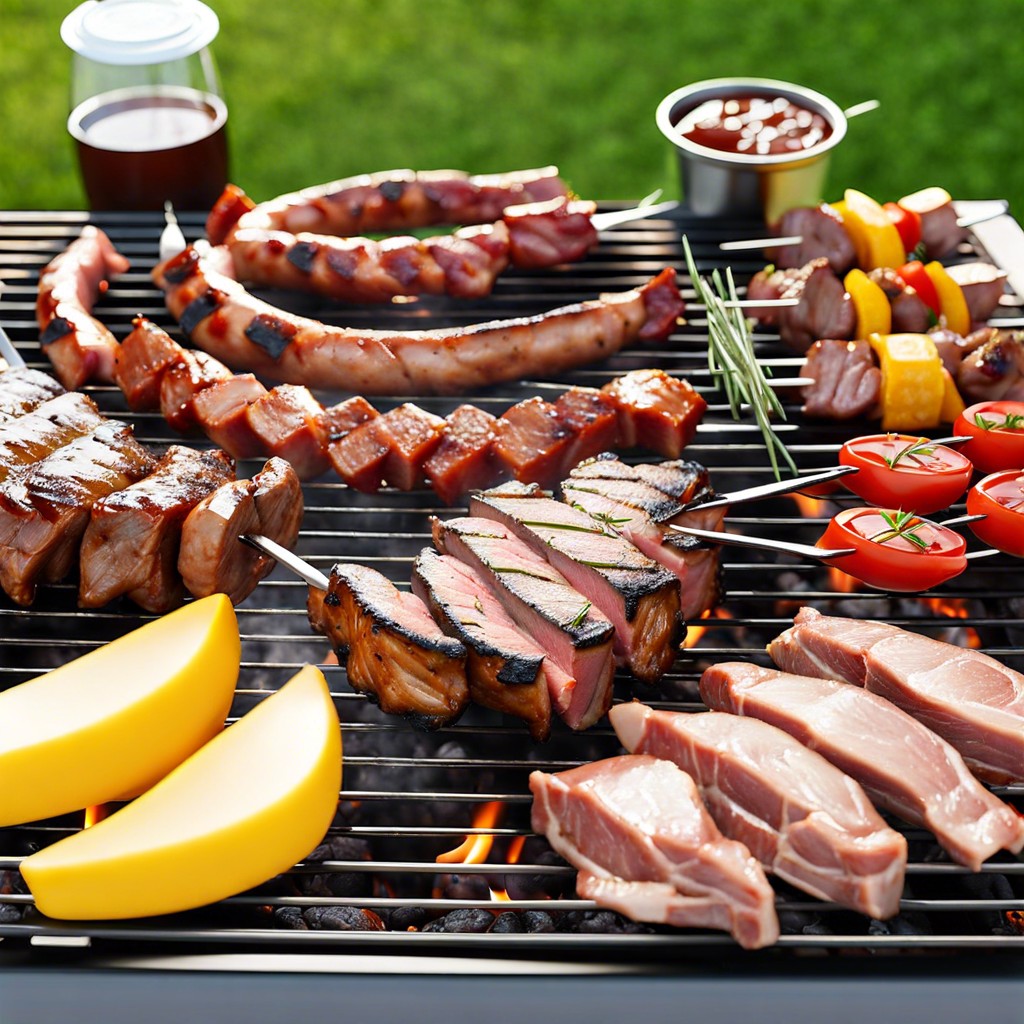This article provides clear guidelines for determining the appropriate amount of meat to cater for any event, ensuring guests leave satisfied without excessive leftovers.
Key takeaways:
- Assume half a pound of cooked meat per meal
- Consider the type of event and multiple protein options
- Brisket: 1/2 pound per person; Pulled pork: 1/3 to 1/2 pound per person; Ribs: 1 pound per person; Chicken: 1/2 pound per person
- Red meat: 1/2 pound per person; Poultry: 1/3 to 1/2 pound per person; Pulled pork: 1/3 pound per person; Fish: 1/4 to 1/3 pound per person; Sausages: 1 to 2 per person
- Length of event, guest demographics, type of event, and additional protein options affect portion planning; Offer plant-based and gluten-free options for special diets.
Main Considerations for Planning Your BBQ Menu

When planning a barbecue event, understanding your guests’ preferences is essential. In establishing a baseline, assume typically active adults consume about half a pound of cooked meat per meal. Remember, cooked meat weight differs from raw — a raw pound may yield only 9 to 12 ounces post-cooking due to moisture and fat loss.
Diverse appetites and potential wastage make it prudent to factor in a margin for error. Keep the type of event in mind; a sit-down dinner will differ in portion expectations from a casual buffet or a family-style meal. Also, the presence of multiple protein options might decrease the quantity required of each. Balance is key – your menu should reflect a variety of other dishes that complement the meats and cater to a range of tastes and dietary requirements.
Meat Amount By Type
Different cuts of meat yield varying serving sizes. For brisket, allocate 1/2 pound per person when cooked, accounting for its significant shrinkage during smoking. Pulled pork, with less shrinkage, requires a 1/3 to 1/2 pound serving. Ribs demand a more generous estimate due to the bone-in nature; plan for about 1 pound per person. Chicken, being less dense, is best estimated at a 1/2 pound per person. Always round up these weights when in doubt to ensure ample supply, especially for larger appetites and seconds.
Portions Guide By Type of Food
When determining portion sizes, it’s essential to consider the type of meat being served. For red meat like beef or lamb, aim for ½ pound per person. Poultry is lighter, so allocate ⅓ to ½ pound per person. For pulled pork, a staple at BBQ events, plan on approximately ⅓ pound per person. Keep in mind that these weights refer to the meat in its cooked form, so adjust your purchase amounts to account for cooking shrinkage, which can be significant in some cuts.
For fish, which is lighter still, around ¼ to ⅓ pound per person should suffice. Sausages are typically served in links or pieces; one to two per person is a good baseline. With these guidelines, your guests will enjoy a satisfying meal without the fear of undercatering or excessive leftovers.
Factors to Consider
When calculating meat portions, consider the length of the event. Longer gatherings often require more food.
Next, assess your guest demographics. Events dominated by active, young adults may demand more substantial portions than those with a majority of children or elderly attendees.
The type of event also shapes consumption; a sit-down dinner leads to higher individual intake compared to a cocktail-style affair where guests may graze on a variety of foods, including side dishes and appetizers.
Moreover, the presence of additional protein options such as fish or vegetarian choices can reduce the quantity of meat required per person.
Lastly, keep in mind the desired impression: a bountiful spread might be preferable for a lavish event, whereas a casual backyard BBQ may call for a more relaxed approach to portions.
Catering for Special Diets
When planning for guests with dietary restrictions, the key is to offer a variety of options ensuring everyone can enjoy the event. Include plant-based meats and gluten-free alternatives to cater to vegetarians, vegans, and those with gluten sensitivities. Ensure you clearly label these options.
For those with allergies, prepare dishes void of common allergens like nuts and dairy, or establish a separate cooking area to prevent cross-contamination. It’s also thoughtful to provide lighter options such as grilled vegetables and salads for guests who may be watching their calorie intake.
Obtain detailed dietary preferences and restrictions from the event organizer beforehand to ensure you’re well-prepared to address the needs of all attendees.